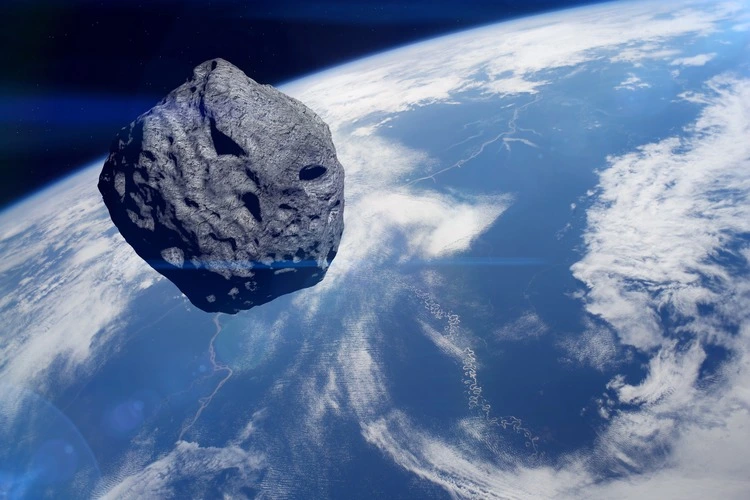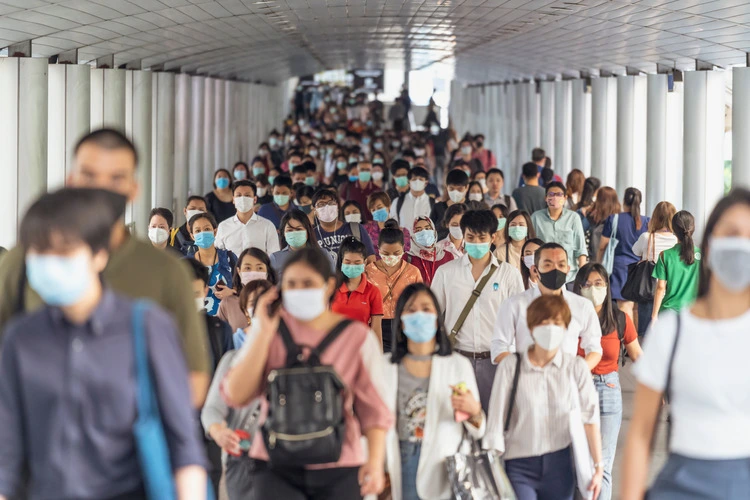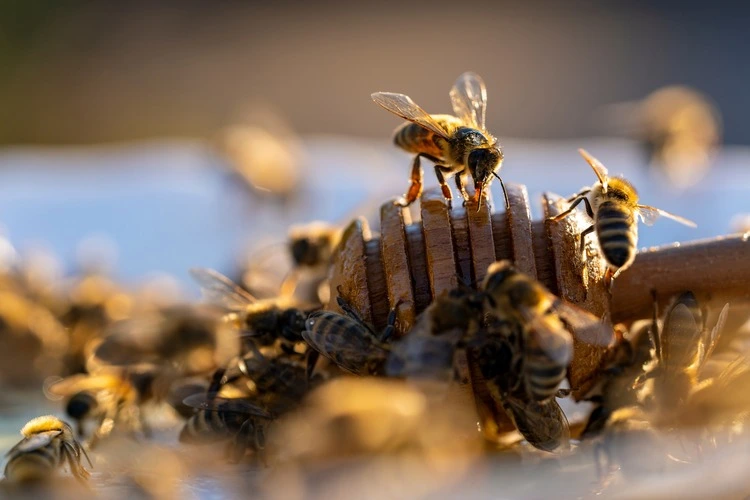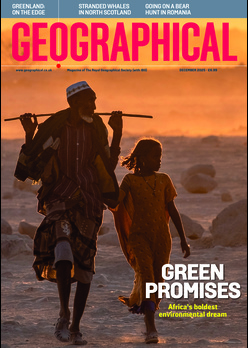
The latest 2024 YR4 asteroid is likely to pass Earth by. However, the planet faces other risks in its future – here we explore them & their potential impacts…
By
This month, an asteroid hurtling around space captured the attention of astronomers and the public alike. Named 2024 YR4 – and measuring between 40m to 80m across – the space rock previously had a 2.8 per cent chance of hitting our planet in 2032. Now, thanks to new telescopic observations, the risk of impact has plummeted to just 0.001 per cent.
Enjoying this article? Check out our related reads:
Even if 2024 YR4 did strike, it wouldn’t be catastrophic, likely travelling along a ‘risk corridor’ of major cities before landing in the Pacific Ocean, northern South America, the Atlantic Ocean, Africa, the Arabian Sea or South Asia.
It’s clear the space rock isn’t the cataclysmic asteroid that features in sci-fi movies, but it does remind us of one very important fact: our planet is vulnerable to a range of scenarios – both ones humans can, and cannot, prevent – that threaten its existence.
Could a large-enough asteroid ever pose a genuine extinction threat? And beyond space rocks, what other planetary risks do we face? Here we explore some of those major risks – from climate change to biodiversity collapse – and see how likely they are to occur.
Asteroid wipe-out
To NASA, a space rock is considered a potential hazard if it measures at least 140 metres in diameter, and orbits the Earth within 7.4 million kilometres (4.6 million miles). These rocks could wipe out entire cities and wreak major havoc in surrounding landscapes.
Larger rocks (measuring at least 1 kilometre in width), are those which could ‘trigger the end of civilisation’, according to astrophysicist at Rhodes College Gerrit Verschuur.
After impact, clouds of gases and dust would block sunlight and prevent plants from carrying out photosynthesis. As these plants would die out, so too would animals – except for a slim chance of survival for very small and ground-dwelling creatures.
Ultimately, the risk of such a sizeable asteroid hitting Earth is very small – the chance of a large asteroid hitting is just one in 300,000 (or 0.00033 per cent). Scientists are also increasingly able to detect asteroids early, allowing them to be charted, monitored and appropriately dealt with as they become observable in space. This, too, adds further protection to the planet and helps to mitigate some of the risks of asteroids, which, coupled with the already low risk, means asteroids wiping out the planet is not a major concern for astronomers.
Nuclear war

Around the world, there are an estimated 12,512 nuclear warheads. If a small percentage of these were detonated, catastrophic consequences would ensue: leaving millions dead instantly and impacting generations to come with radiation-induced cancers and other health repercussions.
A simulation conducted by Princeton University in 2019 found that if just one low-yield nuclear weapon was triggered in a Russia-US war, 34.1 million people could die and a further 57.4 million may be injured in several hours. Several hundred of these weapons, both in Russia and America, are capable of being launched in just minutes.
According to research organisation Rethink Priorities, there is an approximate 1.1 per cent chance of nuclear war each year, and a 0.38 per cent chance of nuclear war between the US and Russia.
A strong social factor preventing the use of nuclear weapons is mutually assured destruction: the concept that if one country uses a weapon, it will be likely hit by the target country (and therefore also impacted). In other words, the use of any nuclear weapon would result in the attacking and defending nations being destroyed.
Climate change

According to deputy director of the MIT Center for Sustainability Science and Strategy C. Adam Schlosser, the odds of climate change driving humans to extinction is ‘very low, if not zero’.
However, the impacts that climate change can have on the planet are still sizeable. As Schlosser explains, climate change may not ‘end your world’ if you live in a city high above sea level, but for those living in island nations or coastal plains threatened by rising sea levels, impacts may be far more catastrophic, devastating livelihoods, households and more.
The consequences of climate change are also felt most pertinently by poorer, more vulnerable populations. Those who live in these areas face limited resources to prepare for and recover from climate disasters. So, if climate change continues, it can be expected that conditions will become far worse for those in precarious financial situations.
In some research, however, the high temperatures caused by climate change today may wreak havoc on the wider planet millions of years in the future. Using a climate model, researchers at the University of Bristol found that the planet will become largely uninhabitable for most mammals in 250 million years due to extreme heat, with only 8 to 16 per cent of Earth’s land habitable.
The study explains this is because climate extremes already present today will dramatically intensify when the world’s continents merge together, forming one hot, dry supercontinent.
Pandemic

The sizeable impact that a pandemic can cause across society is likely fresh in our minds, following the COVID-19 outbreak of 2020.
Research published in 2022 shows that the chance of a similar pandemic, with almost equal impacts, is about 1 in 50 in any given year. This means that for every individual reading this, the probability of experiencing another pandemic of the same severity during their lifetime is 38 per cent.
A range of factors are making disease outbreaks occur much faster than in the past, such as population growth, environmental degradation and increasing contact between humans and animals carrying diseases, according to associate professor of global environmental health at Duke University William Pan.
In terms of a pandemic that could wipe out all human life, one study conducted by Princeton University found that this was a ‘statistically likely’ event within the next 12,000 years.
But it’s not all bad news: researchers and scientists around the world are actively trying to prevent a catastrophic pandemic through a variety of means, including devising better pandemic preparedness strategies and establishing global standards for maximum-security laboratories handling dangerous pathogens.
Biodiversity collapse

Some of the planet’s smallest creatures play the biggest role in keeping it turning. One such noble animal is the bee; whose pollination abilities are what 84 per cent of all Europe’s commercial crop species depend on to survive.
Elsewhere around the world, the insects’ impact is vast. According to the Food and Agriculture Organisation of the UN, 100 crop species provide 90 per cent of the world’s food – and 71 of these are pollinated by bees.
But bees are facing a decline in their population globally, due to monoculture, increased use of pesticides and climate change. Factors including air pollution, parasites and pests may also be contributing to their falling numbers.
If all bees in the world disappeared, we would lose vast quantities of the food that sustains billions across the globe. Although it would not lead to famine – since the majority of human calories come from cereal grains, pollinated via wind – human nutrition would likely suffer as fruit and vegetable crops rely on bee pollination.
Full bee extinction is an unlikely scenario, but companies continuing to limit harmful pesticide use, as well as consumers chipping in to eliminate monoculture by planting a multitude of plants in home gardens can prevent dwindling bee numbers.
AI takeover

It sounds like something from an apocalyptic dystopian movie: robots taking over the planet. While researchers are not unduly concerned about artificial intelligence replacing humans, there are clear risks that the technology can pose as it continues to develop.
One major issue that AI can bring is that of misinformation. If these models are trained on incorrect information, they can continue to regurgitate flawed data that will then influence future models and create a cycle of factually-incorrect knowledge. Coupled with this, AI models can suffer from hallucinations, whereby they create false information accidentally. Hallucinations can appear convincing to the everyday user, with AI software known to fabricate links to sources or web pages that never existed.
AI can also create convincing deepfakes (videos or pictures of celebrities or public figures that have been altered so that they appear to be doing or saying something that did not happen) with damaging consequences.
Additional concerns over AI include its manipulation of users – such as a Belgian man who died by suicide after an AI chatbot allegedly encouraged him to kill himself – into carrying out harmful behaviours.
Across the world, stronger regulations on AI are beginning to form, ensuring innovation with the technology can occur while mitigating inherent risks with its use.




